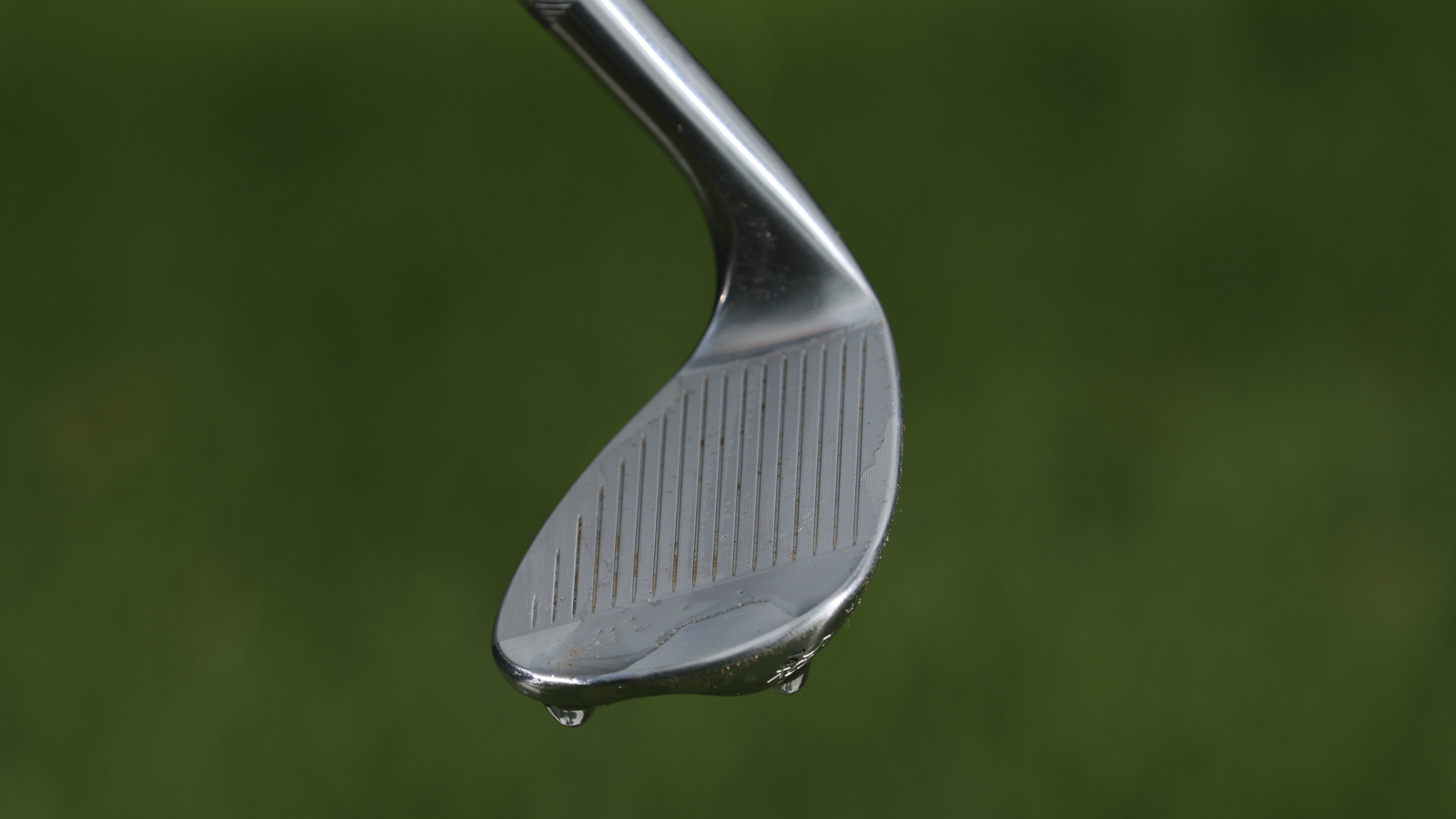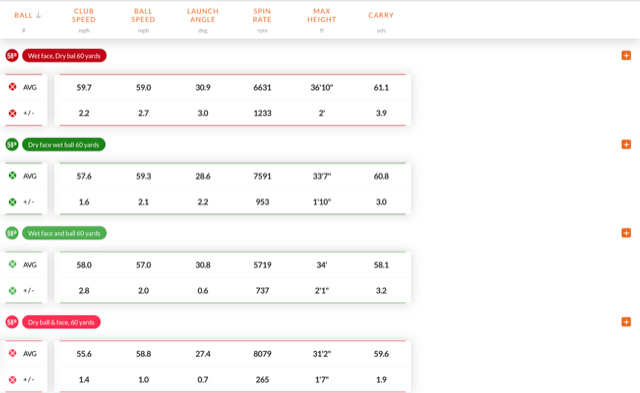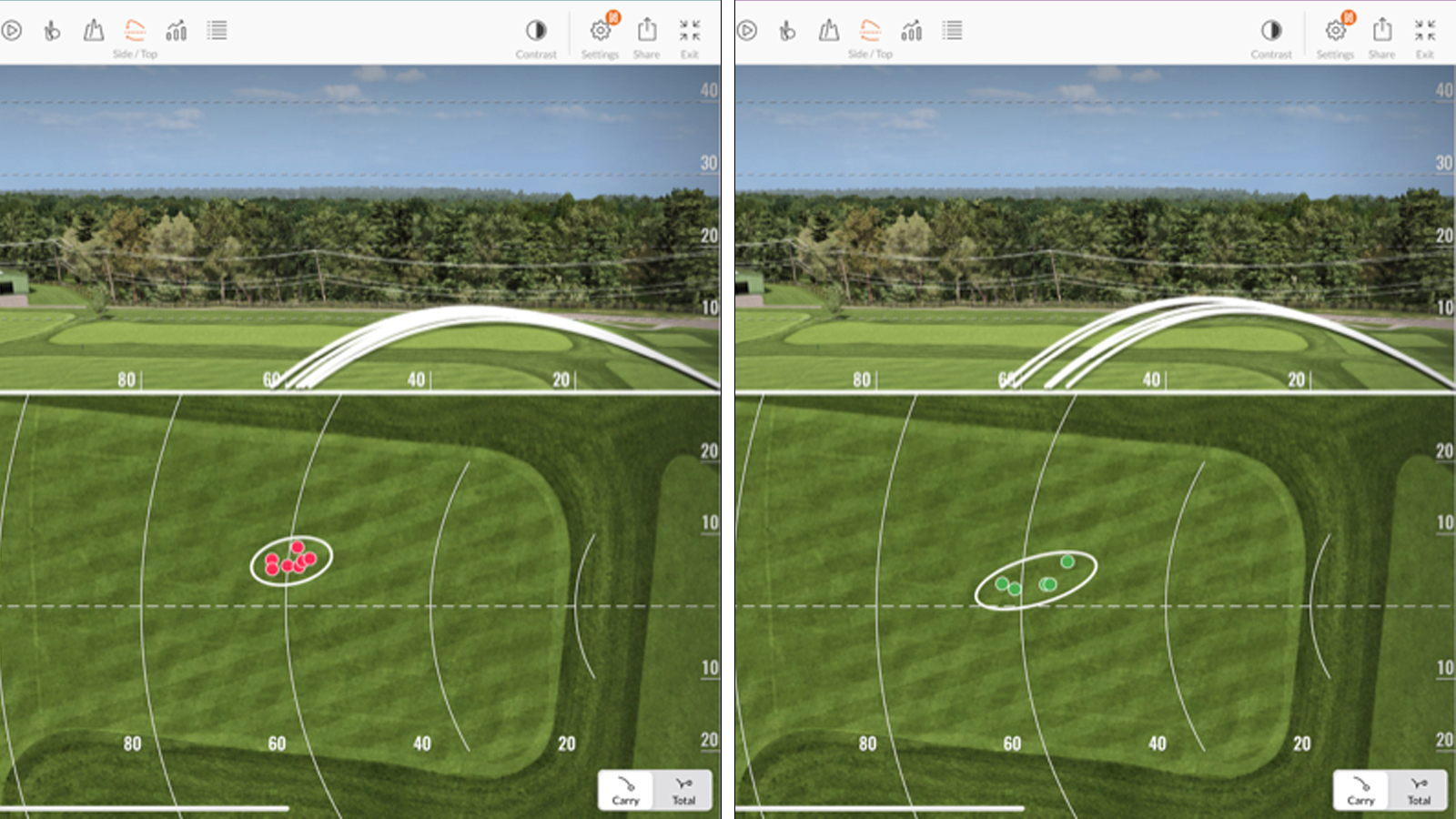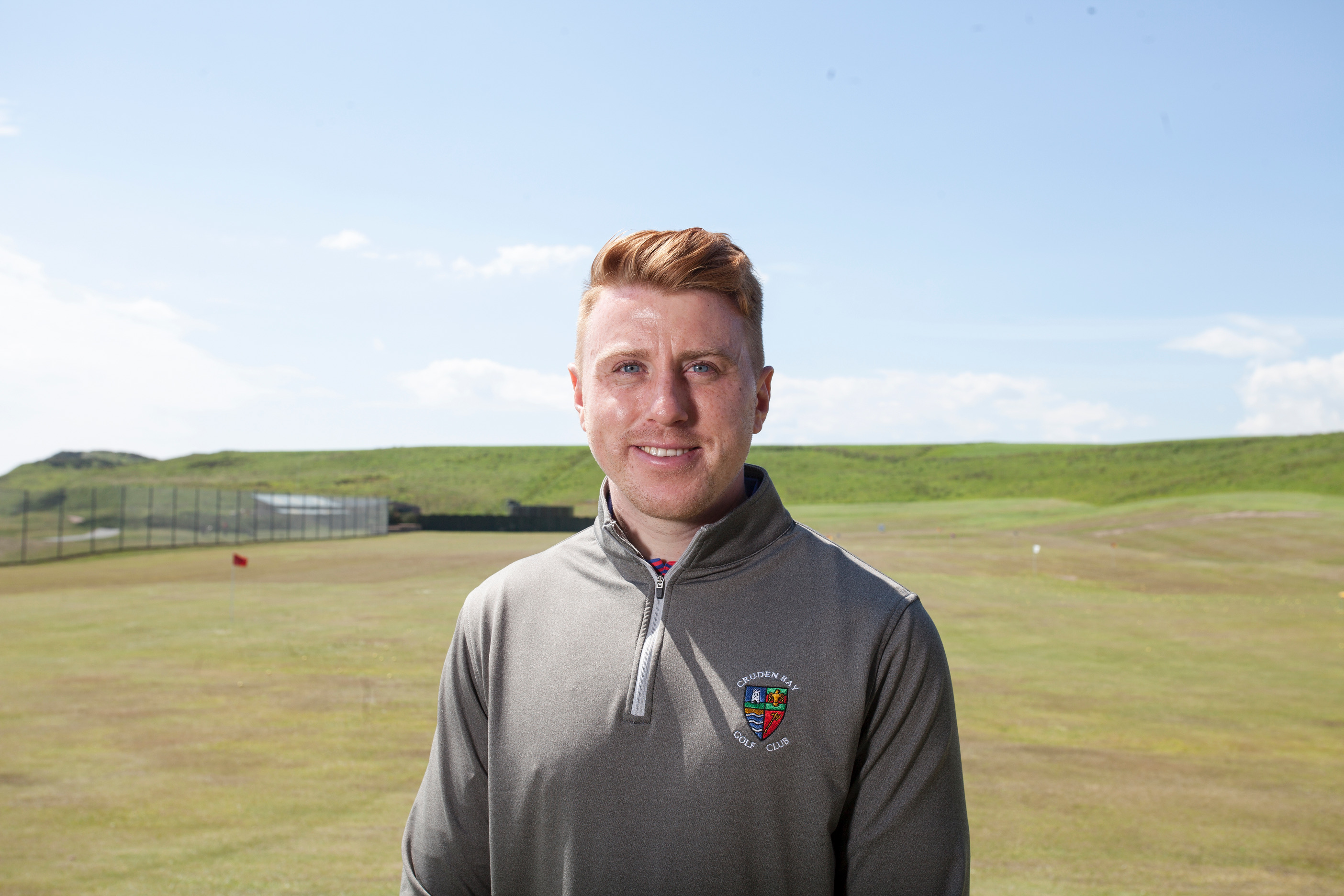Data Reveals Huge Impact Of Water On Wedge Shots
Golf Monthly Top 50 Coach Murray Patterson tests how water affects spin, flight and distance on 60-yard wedge shots


Understanding how to spin the golf ball is all well and good, but getting the ball to grab and stand to attention requires a number of factors to come together. Clearly, having the best golf wedges will help, but one of the biggest influences on success with your wedges is moisture.
With that in mind, I wanted to ascertain the impact that water, both on the ball and on the clubface, had on the consistency of my 60-yard wedge shots...
Impact of water on 60 yard wedge shots – what the data says...
Watching golf on TV, one of the things tour players do that you don't is hit that 50-80 yard skipper, that spins and stops right next to the hole. In simple terms, these players are hitting a wedge shot with low-launch and high-spin, but this really isn't a 'simple' skill to master.
Playing with one of the best golf balls will help your chances of success with this shot, but away from upgrading your equipment there are a few things you can do to become a short game sorcerer...

Kevin Yu hitting a wedge shot at a wet 2024 Pebble Beach Pro-Am
The experiment
This test was carried out using a Titleist Vokey 58-degree wedge along with a Pro V1 golf ball. The aim was to see the difference in consistency (spin, height and flight) when the environment of the shots was manipulated. The four different environments were:
- Dry face and dry ball
- Dry face and wet ball
- Wet face and wet ball
- Wet face and dry ball
The dry face and ball combination aimed to simulate the perfect golfing day and course conditions.
The dry face and wet ball is is more similar to when the ground is wet but it's not raining, meaning you are able to dry the clubface before hitting your shot.
Subscribe to the Golf Monthly newsletter to stay up to date with all the latest tour news, equipment news, reviews, head-to-heads and buyer’s guides from our team of experienced experts.
The wet face and ball lines up to wet ground conditions and poor weather. On the other hand, it could also represent a player who isn't very consistent with drying their wedge after a practice swing on wet grass.
A wet face and dry ball is the perhaps the rarest scenario but it can still be created when preferred lies are in operation. Sometimes a player will lift, clean and place their ball (dry) but forget to dry their wedge.

Cleaning your wedges after a practice swing is crucial to increase your chances of success
The results
The results of the experiment were very interesting, albeit slightly predictable. The dry ball and face combination generated the most spin (8,079 rpm), an average of 2,360 rpm more than the wet face and wet ball.
The data returned some interesting results. Perhaps predictably, the dry ball and face combination produced the most spin (8,079 rpm), an average of 2,360 rpm more than the wet face and wet ball.
The trends from the report suggest having a dry clubface leads to improved spin numbers. A much larger fluctuation exists between the wet face and ball, resulting in greater inconsistency in both launch and carry.
Shots hit with a dry face and wet ball also produced more spin (7,591 rpm) than those hit with a wet face and dry ball (6,631 rpm).

The data gathered highlighted how water on the clubface and/or ball impacted performance
Analysing the ball flight, it's clear that the consistency improves when the face and ball are dry. While it isn't always possible to control this, especially when playing golf in the winter, you might be able to take advantage of the preferred lies rule to lift, clean (dry) and place your ball.
We are talking small margins here, but if a simple wipe of the club is going to improve your chances of getting your ball to stop more quickly then it's totally worth it.

Flight and distance on shots with a dry face and ball (left) vs a wet face and ball (right)
A very common fault I see with players is that they make practice swings and fail to wipe down the face. If the ground is wet, the face will naturally get wet, and that is going to compromise the level of friction (spin), therefore impacting the consistency of flight and carry distance.
None of us are able to control the weather and conditions, but keeping your grooves clean and dry is something every golfer can do... and it will have a positive impact on your short game!

Location: Cruden Bay Golf Club
Murray took up the game aged ten, when he became a junior member at McDonald Golf Club in Ellon. From an early age, he was determined to become a teaching professional, and during his time at Cruden Bay, he’s established a terrific relationship with the club’s members, and worked with a number of mini Tour professionals and collegiate golfers.
Teaching philosophy:
Everyone is different and there is no single way to swing a club.
Greatest success story:
My greatest success stories aren’t of those who win competitions or tournaments. My greatest success is when a player is ready to give up and I am able to bring back their love for the game again through them playing better golf.
Biggest challenge:
In a world where everything is instant, you naturally come across players who expect immediate success from little tuition and little practice or play. Getting the player to buy into the long-term process can often be challenging.